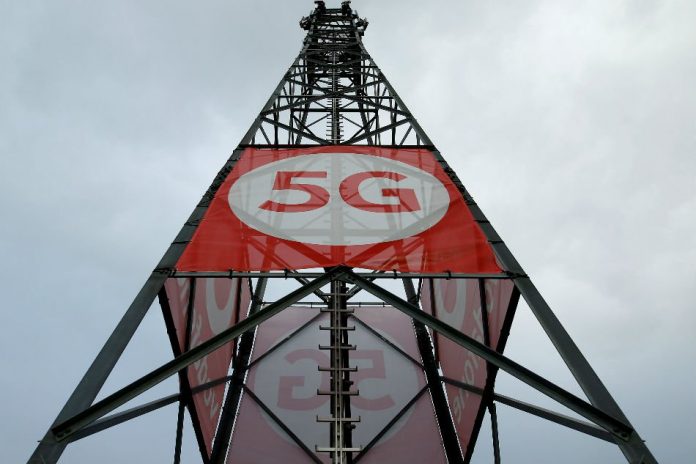
MANILA – Athletes competing in the Southeast Asian Games in November could be shuttling between venues in driverless cars, officials said, should telecommunications companies succeed in rolling out 5G in the Philippines’ city of the future.
The New Clark City in Pampanga is the testing ground for 5G, the next generation wireless standard that will power a host of artificial intelligence-driven technologies from transportation to healthcare on top of ultra-fast downloads.
Filipino telcos Globe and PLDT, like their global counterparts, have been racing to be the first to market with 5G, investing in hardware and partnerships with network providers such as Huawei, Nokia and Ericsson.
WHAT IS 5G?
It is latest generation of connectivity after 4G or LTE, which runs on most mobile devices.
In the 1980s, the first generation used analog radio signals to support wireless calls. About a decade after, 2G used digital radio signals to enable text messaging for up to 160 characters at a time.
Also known as Global Standard Mobile (GSM), it ran at a maximum speed of 54 kilobits per second (KBPS), National Telecommunications Commission (NTC) Deputy Commissioner Edgardo Cabarios told ABS-CBN News.
Mobile devices became internet-capable after 3G improved connection speeds through “code division multiple access” (CDMA), he said.
Unlike its predecessors where data had to pass through a single line, 3G “divided data into packets which can be transmitted through multiple routes,” the NTC official said.
LTE improved 3G’s 2 megabits per second (MbPS) speed, he said.
WHAT CAN 5G DO?
Driverless cars, automated systems and artificial intelligence are expected to work more efficiently with 5G, said Globe Telecom Director for Technology Strategy Gerhard Tan.
Connection speeds could run up to 1 gigabits per second, resulting into lower latency, Tan said. Latency is the response time before one device successfully connects and sends data to another.
“Kunwari dadaan ang tao sa isang sensor. Pag mabagal ang response time, it means matagal ‘yung latency niya, mabagal niyang maca-capture na may dumaan na palang tao,” he said.
(For example, passing through a sensor. If the response time or latency is slow, the sensor would not immediately capture that a person is passing through and something needs to be activated.)
“Bibilis ‘yung user experience. Buffering matatanggal yan,” he said.
(User experience would be faster. Buffering would be eliminated.)
WHAT INFRASTRUCTURE IS NEEDED FOR 5G?
The fifth generation standard is faster than its predecessors because it can “double, triple or even quadruple” speed using the “multiple in, multiple out” (MIMO) technology, Cabarios said.
While 5G radio signals are stronger than frequencies used by its predecessors, its coverage area is more limited, Cabarios said.
LTE signals operating on 700 megahertz could reach up to 3 to 5 kilometers away from a cell site, while 5G’s 3.5-gigahertz frequency could cover only up to 500 meters, data showed.
Telco companies are now finding ways to build more cell sites closer to one another to address 5G’s limited coverage.
“You must be close to a cell site to enjoy 5G’s high speeds. Ito ‘yung problema mo sa mga high-end subdivision kasi ayaw nila ng cell site sa loob, malayo sila, mabagal,” Cabarios said.
(This is the problem with high-end subdivisions because they don’t want cell sites inside their villages, so they get slow internet.)
HOW MUCH WILL 5G COST?
The P8-million price tag of cell sites and red tape could hamper the roll out of 5G in rural areas, Tan said.
“The subscribers are very far from each other. It means you really have to build a couple of sites to serve yung subscribers doon sa area,” he said.
The construction of new cell sites is not expected to be passed on to consumers, Cabarios said.
There may be increases in cost but upgrading to this new technology allows telcos to cater to more subscribers so their expenses are supposed to be offset by larger revenue, he said.
Telcos have yet to disclose launch dates and price points for their upcoming 5G mobile services.
“Depende ‘yan how soon ‘yung comfort level ng Globe and Smart to offer it,” NTC’s deputy commissioner said, noting that the two telco giants are still testing 5G.
(That depends on how soon Globe and Smart can achieve a comfortable level before they offer it.)
“Mapapasama sila sa subscriber nila pag inintroduce nila tapos pumalpak,” he said.
(They would earn the ire of subscribers if they introduce a faulty 5G.) (ABS-CBN News)




